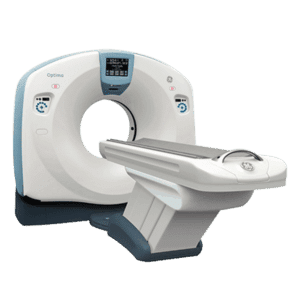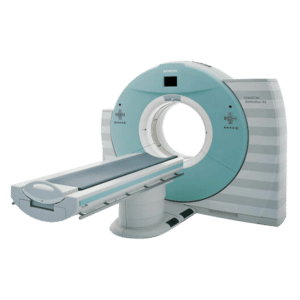CT Scanner Maintenance: Calibration
CT units are the premier imaging tool for all imaging departments throughout the world. They are used in diagnostic, therapeutic and interventional procedures. Therefore CT Scanner calibration is fundamental to ensure high imaging quality.
According to iDATA Research, there are over 75 million CT scans performed each year in the U.S. alone. Most scans are done on the head, neck, and facial regions. And in recent years, there has been a surge for cardiac, angiography and neuro CT studies.
Therefore, calibrating a CT unit on a regular basis ensures that high resolution images of nerves, arteries and other vascular structures are rendered in accurate detail.
In today’s article we will discuss the steps involved in calibrating a CT scanner. To date, there are no standards for how often a CT scanner should be calibrated.
First what is CT calibration and why it’s important for CT maintenance?
There are lots of different types of scanners that are suited to different exams and patient populations. For example, large bore scanners for bariatric patients, and multi-slice units for detailed studies. And they all must be calibrated to maintain their accuracy and high resolution.
Calibration involves scanning an object or phantom with a known radio density to check whether its measurements give the appropriate Hounsfield units (HU)
A HU value is used to measure the absorption/attenuation of radiation within tissue. During the CT image reconstruction phase, a grayscale is produced using the appropriate HU’s for the studied done. CT scanners are capable of rendering over 200 different shades of gray (from the darkest darks to the lightest whites.) With this kind of contrast, the slightest difference within 2% in tissue density can be detected. Therefore, a regular CT calibration must be performed to maintain this accuracy without image distortion or loss of value. Image distortion or lack of proper contrast could lead to misdiagnosis and/or delay in treatments for critically ill patients.
Other uses for calibration include testing out a CT scanner for purchase. The buyer can test the accuracy of the scanner for specific studies at their practice.
CT calibration tests will vary from institution to institution depending on the exams performed and the volume. It is imperative that the biomed team is well versed on how much the CT scanner is used and what studies are done to determine if the scanner will meet the needs of the department.
The calibration depends on three things:
- technological characteristics,
- exposure factors used
- and image viewing conditions.
Get Started
Request Pricing Today!
We’re here to help! Simply fill out the form to tell us a bit about your project. We’ll contact you to set up a conversation so we can discuss how we can best meet your needs. Thank you for considering us!
Great support & services
Save time and energy
Peace of mind
Risk reduction
Here’s a list of the parameters tested during the CT Scanner calibration
- CT number: calculates the relevant number of different tissues in the body
- Uniformity: Measures the homogeneity of the image. It is important to ensure that hardening artifacts are avoided, and the tissue being imaged has a uniform appearance free from artifacts.
- Linearity: Is measured with the phantom with several materials mimicking different tissues. Those images are compared with the actual (HU) of the tissue.
- Noise: Unwanted values or densities in an otherwise homogenous image.
- Spatial resolution: Is the ability to distinguish the differences between two structures that have different densities. For example, muscle vs. fat cells will have different densities.
- Low contrast resolution: CT imaging can distinguish over 200 different shades of grays. Which is important for distinguishing different tissue types.
- Slice thickness and positioning of the couch: refers to the resolution of the scan in some cases 2mm. The positioning of the couch refers to the movement of the table during the scan. (Varying from 1 mm to 4mm increments)
The future of CT calibration
Scientists are looking for ways to calibrate scanners that lead to a universal standard and that improve comparison scans of different CT units. For example, patient-specific phantomless calibration offers a way to simplify and expand the use of clinical CT for quantitative bone densitometry.
Recap
The biomed team should work closely with the radiologists and department imaging directors to determine the proper protocols to use during the calibration. For example, CT angiography requires the most precision which requires more frequent calibrations.
A proper test should simulate normal operating conditions of the CT scanner specific to
the studies done, patient population, frequency and daily volume of that hospital or practice
CT will continue to play a significant role in medicine now and in the future. Be sure to talk to Amber Diagnostics for more information about purchasing used and refurbished CT units.
Sources
https://www.ncbi.nlm.nih.gov/pmc/articles/PMC5636218/
https://patents.google.com/patent/US8121250B2/en
https://www.qualitymag.com/articles/91790-calibrating-x-ray-ct-systems



